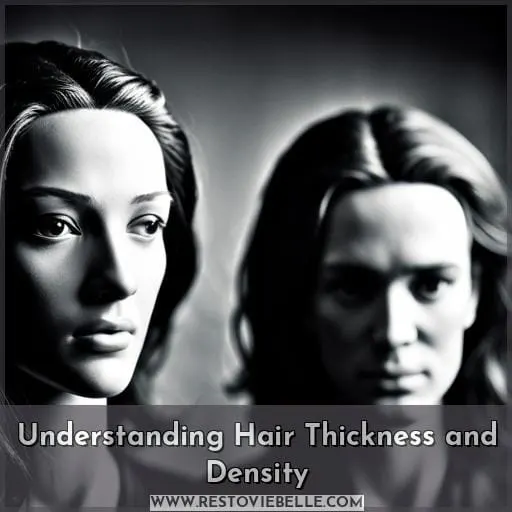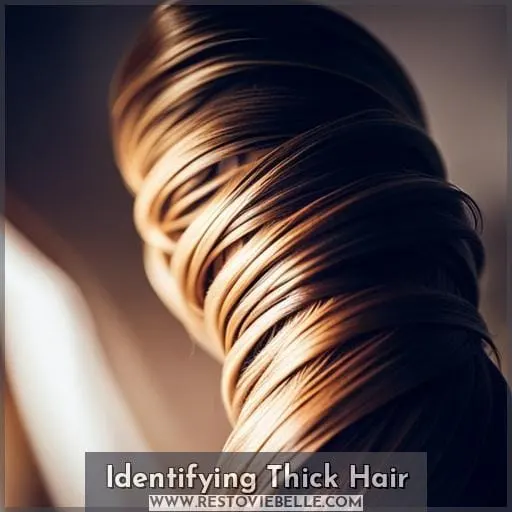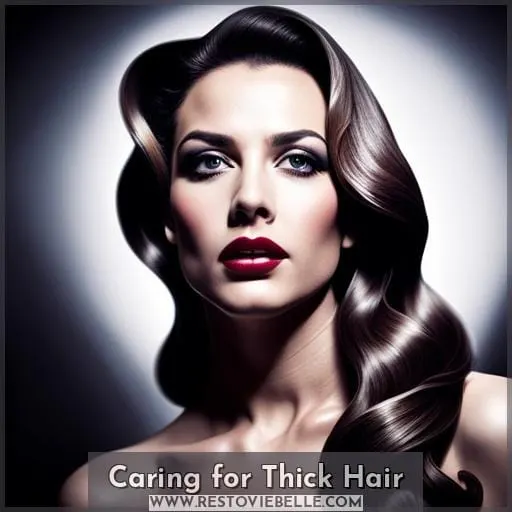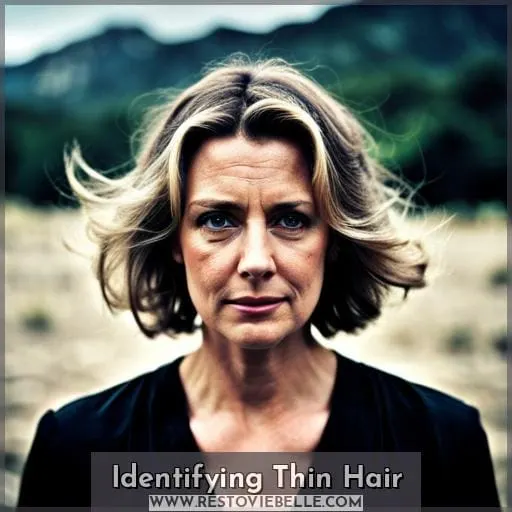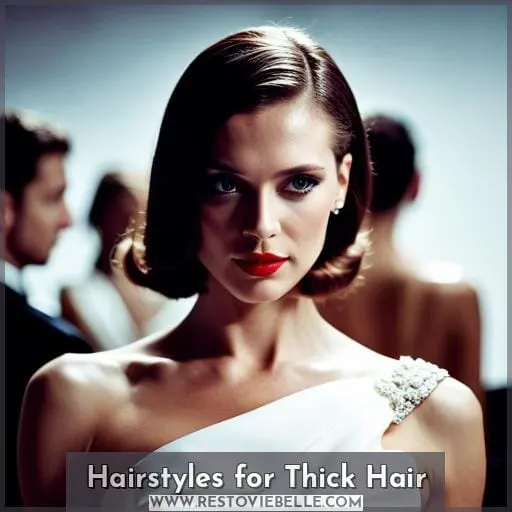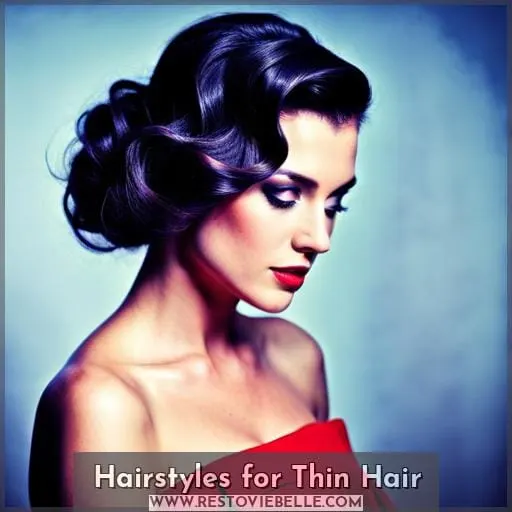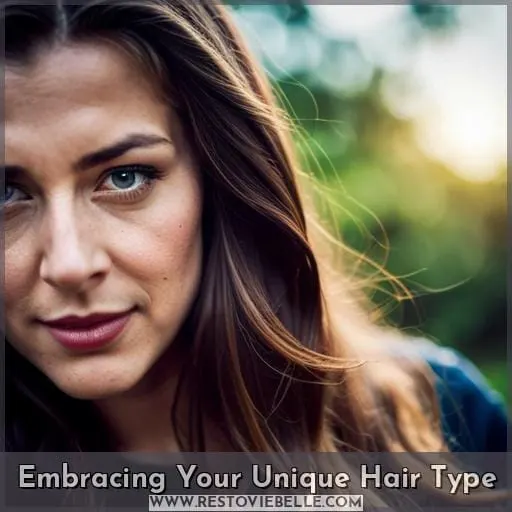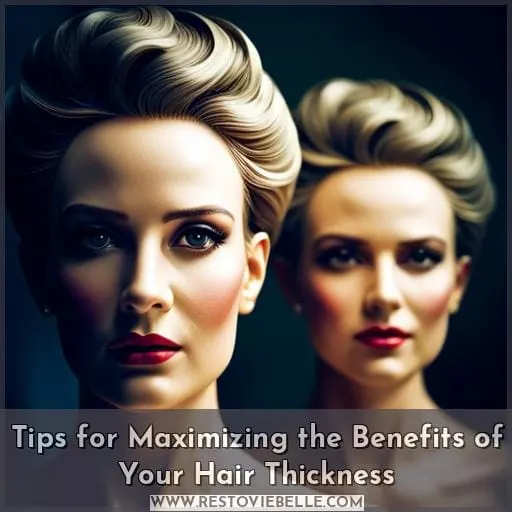This site is supported by our readers. We may earn a commission, at no cost to you, if you purchase through links.
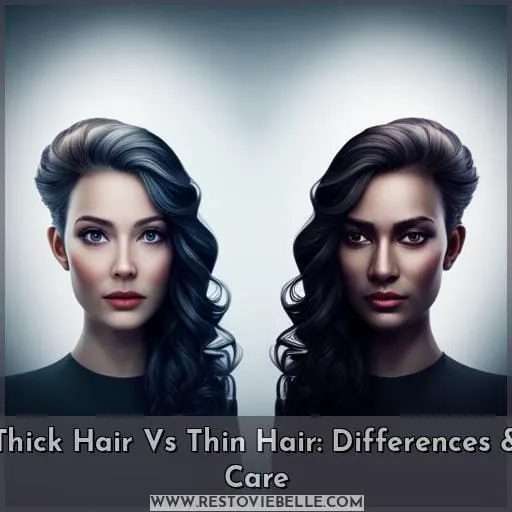 Are you curious about the differences between thick and thin hair? It’s estimated that around 80 percent of people experience some degree of hair loss in their lifetime. That means studying how to care for different types of tresses is vital. Especially when it comes to understanding the difference between thick and thin hair.
Are you curious about the differences between thick and thin hair? It’s estimated that around 80 percent of people experience some degree of hair loss in their lifetime. That means studying how to care for different types of tresses is vital. Especially when it comes to understanding the difference between thick and thin hair.
From testing your density levels, identifying characteristics, customizing haircare products, all the way through styling tips tailored for each type. This guide will help you learn everything there is to know about taking care of both types.
Table Of Contents
Key Takeaways
- Hair type is determined by thickness and density.
- Thick hair requires extra care and specific products like custom shampoo and conditioner, texturizing products, and lightweight oils.
- Thin hair needs customized hair care products, lightweight oils, and styling with texturizing products and heat protection.
- Embrace your unique hair type and focus on scalp care for healthy hair.
Understanding Hair Thickness and Density
Understanding your hair’s thickness and density is key to finding the right products for a healthy, beautiful look. Hair type is determined by both its thickness, which refers to the diameter of individual strands, and its density – how many fibers you have per square inch on your scalp.
From fine (50 microns in diameter) to coarse (120 microns), there are a variety of textures that determine which treatments will be best suited for you.
To test hair density at home, use the ponytail test: one wrap indicates thick hair; two or three wraps indicate medium; more than three wraps indicate thin.
How Hair Thickness is Determined
You can determine your hair’s thickness by feel, texture, and even the number of wraps in a ponytail. Fine hair has a diameter of around 50 microns, while coarse hair is typically 120 microns. Hair density varies between 80k-150k fibers. To get an accurate measurement, check scalp visibility and width.
For thick locks, look into custom masks or thinning/layering treatments to keep it healthy. Fine strands need customized shampoo and conditioner, as well as heat protection serums for added volume without damage.
How Hair Density is Determined
Dive into the depths of your mane and explore its density! Hair density is an important factor to consider when determining hair thickness. Ponytail width, scalp visibility, and texture are all factors that can be used for hair density testing.
Thick strands will feel dry and stiff, while thin strands barely register between fingers. Custom masks can help add volume or moisture to thick or thin locks, respectively.
High-density fine hairs may need extra attention with thermal protection serum, as well as texturizing products for added volume. Discovering the perfect balance of care tailored specifically for your unique combination of hair thickness and density ensures maximum benefits from each individual strand – no more battling against what nature has given you! Embrace it instead by using suitable products that cater to your everyday needs.
Identifying Thick Hair
When it comes to identifying thick hair, there are two main characteristics: hair thickness and density. To determine if your hair is thick, you can use a ponytail test or check the visibility of your scalp.
Characteristics of Thick Hair
Feel the substantiality of your luscious locks and see how they reveal a scalp-concealing texture. Thick hair is characterized by its plentiful volume, making it appear denser than other types of hair.
When compared to fine or thin strands, thick hair requires an extra level of care when styling and maintaining as its naturally larger diameter can cause tangling or knots if not properly cared for.
To keep thick tresses healthy, use custom shampoo with volumizing conditioner to add body while protecting from damage caused by heat styling tools.
Testing Hair Density for Thick Hair
To test for hair density, consider the ponytail test: one wrap of a rubber band around your gathered locks is an indication of thick hair, while two or three wraps signify medium-density locks.
Here are 3 tips to keep in mind when testing for thicker hair:
- Ponytail thickness – One wrap signals thick, two or more wraps signal medium density.
- Scalp visibility – Thick hair conceals skin; thin reveals it.
- Hair strand diameter – Fine has 50 microns; coarse over 120 microns.
When dealing with thicker manes, use custom masks and layer options that protect against tangling knots while maintaining shine and softness from root to tip! For finer tresses, shampoo specifically designed for fine hairs can add body plus heat protection serums help prevent breakage during styling sessions.
Caring for Thick Hair
If you have thick hair, it is important to use products that are specifically designed for your unique needs. Custom hair masks and styling tips can help you maximize the benefits of this type of hair thickness.
Using Custom Hair Masks for Thick Hair
Customize your hair care with a custom mask tailored to nourish and protect thick locks. Thick hair benefits from natural ingredients like deep conditioning oils, proteins, and vitamins that strengthen the cuticle layer of each strand.
To make an effective mask for thick hair at home, mix together assorted nourishing oils such as avocado oil or coconut oil, along with honey, which helps to hydrate the scalp.
Pre-made masks can also be purchased in stores; however, they lack customized options specifically designed for individual needs like thinning layers or split ends found in thicker strands of hair.
For maximum benefit when applying any type of hair mask, use lukewarm water so that it rinses away easily without leaving residue behind on the scalp and strands afterwards.
Styling Tips for Thick Hair
Experiment with enhancing your lush locks by adding layers and using lightweight hair serums to protect against tangles.
Use volume techniques, like back-combing or blow drying with a round brush, to add depth and texture.
If you want to keep the natural thickness of your hair intact while styling it, go for products that are specifically designed for thicker strands and don’t forget about thermal protection!
Haircare is also important when dealing with thick tresses: take our online haircare quiz now to discover which type of products work best for your unique density.
Thick hair has its secrets – discover them today! With the right knowledge about what works best on thick strand types, you’ll be able to unlock all kinds of looks from glamorous up-dos to casual beach waves – perfecting each one without compromising on healthy shine or length.
Identifying Thin Hair
Are you wondering if your hair is thin? Identifying thin hair involves understanding the characteristics of this type and testing its density. Thin hair typically has a diameter between 50-70 microns, while thick strands have diameters from 80-120 microns.
You can also use the ponytail test to determine if your locks are on the finer side; one wrap usually indicates thick tresses, two or three wraps suggest medium thickness, while more than three indicate thinness.
Characteristics of Thin Hair
Feel the difference between coarse and fine strands, as thin hair can barely be felt between your fingers. Thin hair is determined by its diameter of 50-80 microns, which is much smaller than that of thick hair (120-180 microns).
Thinning hairs may have high density, but they won’t appear to be so due to their small size. To test for thinness in hair texture, try a ponytail test: more than one wrap reveals you are dealing with finer strands.
Care for this type includes customizing shampoo and conditioner, using lightweight oils for moisturizing, and texturizing products such as serums or heat protecting sprays when styling.
Embrace unique density while maximizing benefits – use suitable products tailored specifically to your needs!
Testing Hair Density for Thin Hair
To test your hair density, try the ponytail test: one wrap indicates thick locks, two or three indicate medium-density strands, and more than three suggest thin tresses.
Also, check scalp visibility. If you can see it through your locks, then chances are they’re thin.
Texture is another indicator of density. Fine hair feels almost like a silk thread between fingers, while coarse hair has more texture to it.
While misconceptions about these characteristics exist, understanding them helps set realistic hair goals for yourself!
Get familiar with what’s normal for you so that any changes in thickness or fullness become apparent quickly.
Caring for Thin Hair
Caring for thin hair can be tricky, and understanding the right techniques is essential to maintain healthy locks. Customizing shampoo and conditioner, as well as using smart styling techniques tailored specifically for thin hair, will help you achieve amazing results.
Customizing Shampoo and Conditioner for Thin Hair
Customize your shampoo and conditioner to nourish thin hair, helping it thrive with the right amount of moisture. Choose products specifically designed for fine strands that won’t weigh it down or strip away essential oils.
Here are 3 tips for selecting the best shampoo:
- Consider texture – look for volumizing shampoos labeled as ‘lightweight’ or ‘hydrating’ to boost body without weighing down limp locks.
- Read labels – carefully read ingredients; avoid sulfates, parabens, and alcohols, which can be damaging to delicate strands.
- Test them out! Experiment with different brands until you find a product tailored perfectly to your hair maintenance needs.
With these tricks up your sleeve, you’ll soon discover what works best on thin tresses, so they stay healthy while adding volume too!
Smart Styling Techniques for Thin Hair
Smartly style your thin hair by using lightweight oils to moisturize and texturizing products for added volume.
For starters, prep your locks with a volumizing shampoo or dry volume spray before styling.
To boost the body of fine hair, try using sea salt sprays and mousses that add texture without weighing it down.
Consider protective hairstyles like braids, buns, or ponytails which don’t require heat tools that can cause damage to delicate strands.
Use thickening products such as leave-in conditioners specifically formulated for thinning hair.
Try out different length haircuts; layers will give you more fullness than one single length cut could provide!
Finally, avoid overwashing—it strips away natural oil from the scalp, leaving it looking greasy faster than usual. But use gentle shampoos if necessary, especially when following up with intensive conditioning treatments afterward.
Hairstyles for Thick Hair
Try hairstyles that add body and bounce to your gorgeous locks. Voluminous updos are a great way to make the most of thick hair, as they create an illusion of fullness and volume without compromising on style.
Layered bob cuts are also perfect for thicker manes. They bring structure, movement, and definition while still highlighting individual strands.
For those looking for something more elegant yet understated, braided styles offer a modern twist on traditional looks with intricate designs that can be tailored according to the wearer’s preference or occasion.
Pixie chic is another great option if you have abundant tresses. It frames the face nicely by shortening layers in all directions while keeping length at its backside, giving you manageable thickness throughout!
Lastly, boho waves will always remain timeless when it comes to embracing naturally thick hair! To ensure healthy styling results, use hydrating conditioner after shampooing with silicone-free products that won’t weigh down your locks.
Follow it up with a heat protectant spray before using hot tools like curling irons or flat irons.
Hairstyles for Thin Hair
Thin hair is just as beautiful and versatile as thick hair! With the right hairstyle, you can make your thin locks look lush and full.
To start off, try some volume-boosting hairstyles such as beach waves or tousled curls. You can also spice up your looks with updos that will give an illusion of more thickness.
Get inspired by celebrities who proudly rock their fine strands. Think Carey Mulligan’s braided buns or Blake Lively’s messy ponytail – both are perfect choices for thinner manes!
Finally, don’t forget these essential care tips: use lightweight oils to moisturize without weighing down the strands, and utilize heat-protecting products before styling to keep damage at bay while still looking amazing every day.
Embrace the unique beauty of your thin locks now with these stylish ideas!
Embracing Your Unique Hair Type
Embrace your unique hair type and make the most of it with custom products! Whether you have thick or thin hair, there are ways to take advantage of its texture. Hair Type Acceptance means recognizing that everyone’s locks look different and should be celebrated for their uniqueness.
Texture Appreciation involves embracing every curl, wave, coil, kink as part of who you are while Styling Confidence enables you to show off your tresses any way you choose.
Hair Care Wisdom is also essential in order to maintain healthy strands through proper cleansing and conditioning routines tailored specifically for each individual’s needs.
Self Expression goes hand in hand with mastering the art of styling your own mane using helpful tips based on something as simple yet complex as thickness or density type determination.
Here’s how:
- Customize shampoo & conditioner
- Use thermal protection when styling
- Implement gentle post-shower care
With these practices combined together – along with some self-love – anyone can feel beautiful no matter what kind of hair they possess!
Tips for Maximizing the Benefits of Your Hair Thickness
No matter your hair type – thick, thin, or somewhere in between – there are styling options and suitable products that can maximize the benefits of your unique locks. For thicker-haired individuals, consider custom masks to protect against tangling and knots, while for those with fine hair, invest in customized shampoos and conditioners, plus heat-protecting serums.
All types should look into lightweight oils for moisturizing their tresses as well as repairing treatments when necessary.
Styling options for thick hair
Discover new ways to show off the natural beauty of your thick hair. Volume-boosting mousse, texturizing spray, and heat protection serum are essential for styling this type of hair. Try a combination of texture techniques like braids or beach waves to give it more dimension.
A lightweight oil can also help keep locks moisturized without weighing them down while adding shine.
Nurturing fine hair
Nurture your fine hair with customized shampoo and conditioner, heat-protecting serum, and texturizing products for added volume – like adding a few drops of lightweight oil to your routine! Focus on embracing unique textures by customizing the products you use.
Enhance body and shine while protecting from thermal damage with specialized serums or masks designed for thinning strands. For an extra boost of volume without compromising length, layered haircuts are an effective way to add dimension while maintaining texture.
Suitable products for all hair types
Unlock the potential of your hair with suitable products tailored to your unique thickness and density. From custom masks for thick hair to heat-protecting serums for fine strands, find what works best for you.
Explore different styling techniques, including layering or thinning options that can improve texture and volume without sacrificing health.
Conclusion
Thick hair versus thin hair can present a unique set of challenges when it comes to styling and maintenance. With the right knowledge and products, however, anyone can learn to embrace their unique hair type and maximize the benefits of their hair thickness.
Did you know that coarse hair can have a diameter of up to 120 microns, while fine hair is usually around 50 microns? Knowing your hair type can help you choose the right products and styling techniques to meet your needs.
For thick hair, use custom hair masks, consider thinning or adding layers, and protect against tangling and knots.
For fine hair, customize your shampoo and conditioner, use thermal protection while styling, and embrace your unique hair density.
With the right care, you can have beautiful, healthy hair regardless of your thickness or density.
